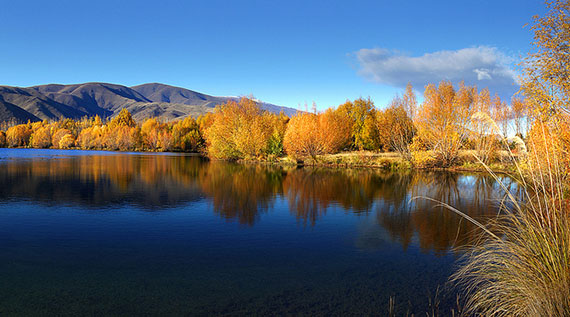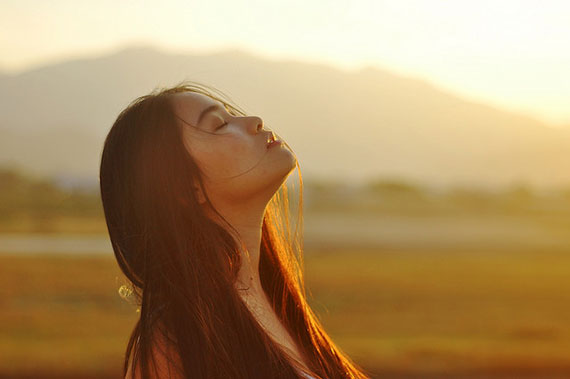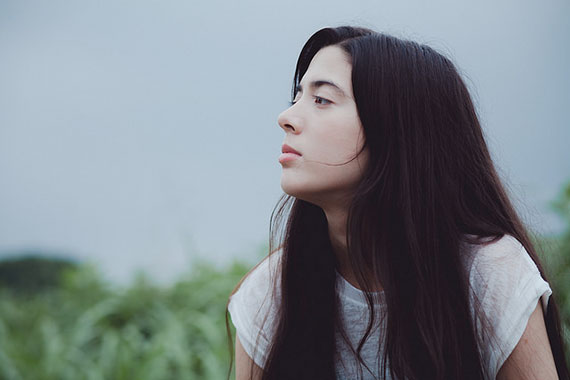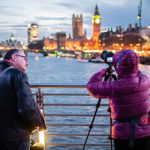Understanding how different lighting affects an image is half the work of creating better photos. This article aims to give a brief overview of the different types of light you might encounter as a photographer and how to use each type to your advantage.

Photo by Bernard Spragg. NZ; ISO 100, f/6.3, 1/160-second exposure.
Direct light
Looking through the family photo album the other day, I noticed a recurring theme: photo after photo of us squinting into the sun, looking like ghosts with our flat, white faces and dark holes where our eyes should have been. This is one of the most common mistakes people make when taking photos in direct sunlight. By standing with your back to the sun, you effectively flatten out the light and therefore your subject. All of those interesting lines and textures disappear, and you are left with a one-dimensional image.
If you are shooting a portrait, you force your subject to look directly into the sun. This makes it difficult for them not to squint or contort their faces into all sorts of unappealing shapes. If you are shooting in the middle of the day, when the sun is high, the shape of your subject’s brows can also create dark shadows over their eyes, effectively removing the most effective feature in a portrait.

Photo by Khánh Hmoong; ISO 200, f/2.0, 1/2000-second exposure.
This kind of light does have its advantages, especially early in the morning and late in the afternoon when the sun is low in the sky. The light tends to be more golden and can cast a warm glow over subjects to create some amazing colors. It is for this reason that landscape photographers like to shoot at these times of day. It is also quite flattering for people, as the need to squint is less, and late afternoon light has a way of highlighting a person’s eyes.
Diffused light
Diffused light is non-directional light, where the intensity of light is even. For example, an overcast day provides diffused light. This light is fantastic for portrait photography, as it creates little or no shadow on a person’s face. This is quite flattering to most people. For the same reason, diffused light is also useful in macro or close-up photography. The evenness of light allows you to capture detail in your subject that might otherwise be lost to overblown highlights or deep shadows if taken in direct sunlight. There are some instances where this kind of lighting can be detrimental to a picture. For instance, landscape photography. Taking a picture of an expansive scene with a flat grey sky and dull colors through the landscape is just plain unappealing. For these instances, some sunlight is preferable to create some interest in the sky and contours of the land.

Photo by takasuii; ISO 100, f/3.5, 1/250-second exposure.
Different lighting conditions are useful for different situations and different types of photography. The thing to remember is that we cannot alter the weather, but we can alter our approach to taking pictures to cooperate with it. Be prepared for all situations and have a couple of different ideas when you go out. If you want to take family portraits and find the light too harsh, find a tree or shaded setting to work in. Be inventive. Be adaptable. Experiment. Walk around your subjects to get an idea of how the light changes at different angles. No matter the lighting conditions, there is always a way to use them to your advantage. You just need to find it.
About the Author
Mark Eden is a freelance photographer and the founder and director of Expanse Photography (www.expansephotography.com). A photographic services company offering fine art images as well as stock and assignment photography and a range of publishing and printing services.
Like This Article?
Don't Miss The Next One!
Join over 100,000 photographers of all experience levels who receive our free photography tips and articles to stay current:






you did amazing work on image, thank you very much for your excellent step by step instruction, I have tried same effects on my project and got appreciated by client..God Bless..have a prosperous career.